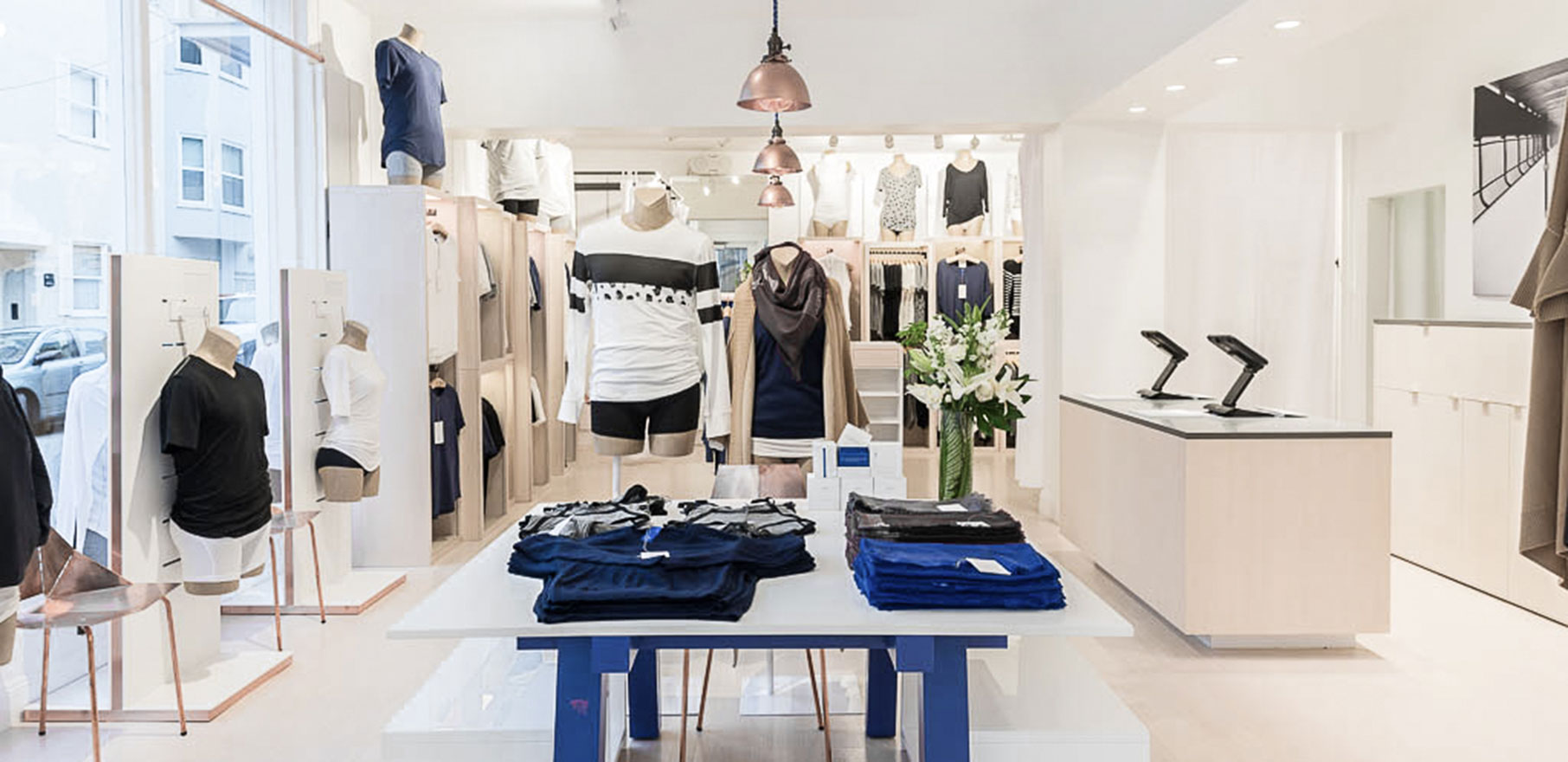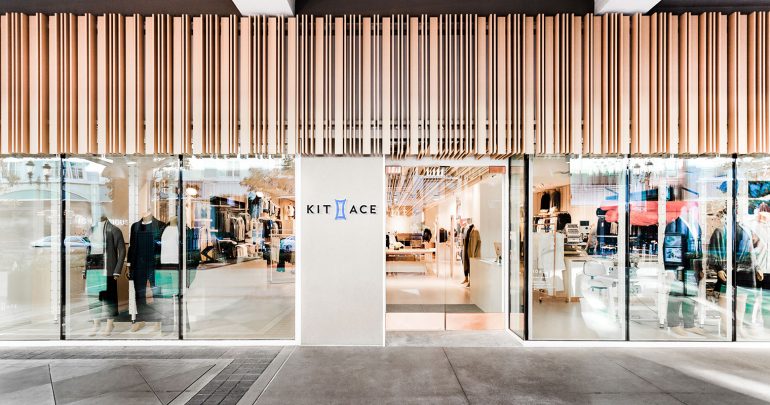Apparel companies are reinventing what it means to engage their customers. If lifestyle brands are about conveying an aesthetic and attitude consumers can aspire to, the next generation of retail is all about creating engaging experiences customers can take part in. One Canadian retailer that’s pioneering a participatory approach to marketing is Kit and Ace. In just two short years, the Vancouver fashion house has rapidly expanded from one retail location to 63 stores across North America, Australia, and the UK. What started as the quest to make the perfect t-shirt has evolved into a full product assortment, with offerings in tops, bottoms, dresses, outerwear, intimates, and swimwear.

A sibling to its sister company Lululemon, Kit and Ace was founded by Shannon Wilson, the former lead designer for Lululemon, and her stepson JJ Wilson. Much like Lululemon, at its heart Kit and Ace is about innovating apparel and elevating consumer expectations when it comes to their everyday attire. In the same way that Lululemon became the modern woman’s go-to uniform on evenings and weekends, Kit and Ace aims to provide the same comfort and performance with its collection of daywear, which includes tunics made from quick-drying silk and dresses that can take you from a conference to cocktail hour.
“Kit and Ace is the next generation in the evolution of athleisure,” said Wilson. “We found that we were in our athletic apparel all day, every day because it provided comfort and ease of care. It also had enhanced technical properties that elevated how we lived our lives. Kit and Ace takes the same principles and technical proprietary functions and properties and embeds them into the clothing you would wear from nine to five,” he says.

To date, Kit and Ace has engineered and commercialized more than 50 fibre blends that hack existing fabrics. Take their Technical Cashmere, for example. Where people tend to avoid cashmere because it’s finicky to wear and wash, the company’s blend is machine washable and includes features like stretch and bounce-back properties. “People are looking for more than just a plain cotton t-shirt,” said Wilson. “The world is thinking differently about how their clothing functions.”

In addition to elevating customer expectations for textiles, Kit and Ace is also setting the standard for merging content and commerce. The company tackles all the standard digital marketing channels you’d expect from an international brand (think Facebook, Twitter, Pinterest, and Instagram) plus takes the idea of a brand blog to a whole new level: The Brief, their own magazine, chronicles everything from interviews with local influencers to healthy eating tips to tricks for boosting everyday mindfulness. At each step of the way, the sell is soft—meaning and the “buy now” call-to-action isn’t explicit, but instead embedded into the editorial. “We have a technical product, so we need to find an outlet online beyond just product description pages to really share the story of the evolution of our fabrics,” said Wilson.

Integrating content and commerce isn’t just a marketing add-on, it impacts the bottom line: according to a 2013 Forrester Research report, the divide between content and commerce leaves revenue on the table. When sales and storytelling departments are divided, this creates a disjointed experience for the customer, also known as “two-site syndrome”: brands that have a collaborative approach, on the other hand, see improvements in all metrics related to commerce. While Wilson doesn’t share any information about sales numbers, the store’s rapid expansion indicates that they’re aggressively pursuing the more than $40 billion spent annually on athleisure.
Beyond digital and print communication materials, Kit and Ace also cultivates community around their retail spaces. In 2015, they rolled out coffee shops at select locations. Called Sorry Coffee Co., the cafes emphasize the brand’s Canadian roots while poking fun at our quick-to-apologize nature. It doesn’t stop at just coffee: personal emails from company team members invite customers to in-store events like intention-setting classes led by local wellness personalities. A dinner party recently held at their Bloor Street retail location in Toronto was a who’s-who of the creative class, set to a five-course meal prepared by celebrity chef Marvin Palomo. “We feel very strongly that the social element of going to a store and experiencing a brand is critical,” said Wilson.

In a world where most shopping can be done in a few clicks, physical stores can no longer be seen just as distribution points for products. Instead, they need to be regarded as access points—living, breathing spaces filled with culture, community, and opportunities for connection. In this model, the customer isn’t on the outside looking in aspiring to some lifestyle that’s just beyond their reach; instead, they’re on the inside looking out, embodying the lifestyle and experiencing it first-hand. And — if done right —this experience leaves a lasting impression on her that’s more powerful than just a pair of pants or t-shirt.


